15-9. When in October the Full Moon
was at the right ascension lines connected with the Head of
Ku it indicated the northern winter was 'ahead'.
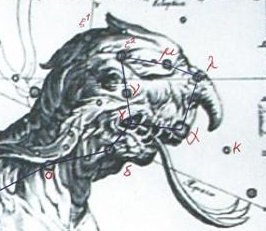
When in April the Sun stood
above the Head of Ku it meant winter was ahead on Easter
Island:
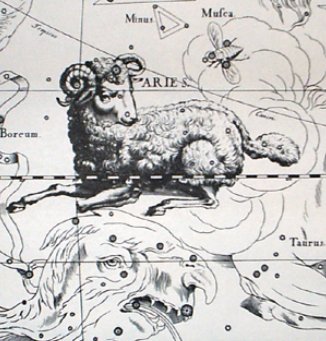
 |
 |
 |
 |
 |
 |
 |
 |
|
Eb6-9 |
Eb6-10 |
Eb6-11 |
(191 + 5) |
Eb6-13 |
Eb6-14 |
Eb6-15 (525) |
Eb6-16 (200) |
|
to ihe |
te ariki |
te kai - te manu |
haú hia |
te tagata |
hakatu i te toga |
kua tupu te kihikihi |
te ihe |
|
Toga. 1. Winter season. Two seasons used
to be distinguished in ancient times: hora,
summer, and toga, winter. 2. To lean against
somehing; to hold something fast; support, post
supporting the roof. 3. To throw something with a
sudden movement. 4. To feed oneself, to eat enough;
e-toga koe ana oho ki te aga, eat well first
when you go to work. Vanaga. 1. Winter. P Pau.,
Mgv.: toga, south. Mq.: tuatoka, east
wind. Ta.: toa, south. 2. Column, prop;
togatoga, prop, stay. Togariki, northeast
wind. Churchill. Wooden platform for a dead
chief: ka tuu i te toga (Bb8-42), when the
wooden platform has been erected. Barthel 2. The
expressions Tonga, Kona, Toa
(Sam., Haw., Tah.), to indicate the quarter of an
island or of the wind, between the south and west,
and Tokelau, Toerau, Koolau
(Sam., Haw., Tah.), to indicate the opposite
directions from north to east - expressions
universal throughout Polynesia, and but little
modified by subsequent local circumstances - point
strongly to a former habitat in lands where the
regular monsoons prevailed. Etymologically 'Tonga',
'Kona', contracted from 'To-anga' or 'Ko-ana',
signifies 'the setting', seil. of the sun. 'Toke-lau',
of which the other forms are merely dialectical
variations, signifies 'the cold, chilly sea'.
Fornander. |
|
Oct 16 |
17 |
18 (*210) |
19 |
20 |
21 |
22 (285 + 10) |
23 |
|
Al Sharatain-1
/
Ashvini-1
/
Bond-16 (Dog)
/
Mahrū-sha-rishu-ku-1 (Front of the Head of Ku)
SEGIN =
ε
Cassiopeia, MESARTHIM =
γ
Arietis,
ψ
Phoenicis (27.2),
SHERATAN (Pair of Signs) =
β
Arietis,
φ
Phoenicis (27.4)
*351.0 = *27.4 - *41.4 |
ι
Arietis (28.0),
λ Arietis (28.2), υ Ceti (28.8) |
ALRISHA (The Knot) = α
Piscium, χ Phoenicis (29.2),
ε
Trianguli (29.4),
ALAMAK
(Caracal) = γ Andromedae
(29.7)
*353.0 = *29.4 - *41.4 |
Arku-sha-rishu-ku-2 (Back of the Head of Ku)
2h (*30.4 = *354.0 + *41.4)
κ
Arietis (30.3),
HAMAL
(Sheep) = α
Arietis
(30.5)
ALKES (α
Crateris) |
DELTOTUM = β Trianguli
(31.2), ι Trianguli (31.7), η Arietis (31.9) |
ξ¹ Ceti (32.1) |
γ,
δ Trianguli (33.0),
χ
Persei (33.2),
10 Trianguli
(33.5),
θ
Arietis (33.3),
MIRA (Astonishing) = ο
Ceti
(33.7) |
No star listed (34) |
 |
|
April 17 (107) |
18 (290 - 182) |
19 |
(364 - 254) |
21 |
22 |
23 |
(314 - 200) |
|
... About
Carmenta we know from the historian Dionysus
Periergetis that she gave orcales to Hercules and
lived to the age of 110 years. 110 was a canonical
number, the ideal age which every Egyptian wished to
reach and the age at which, for example, the
patriarch Joseph died. The 110 years were made up of
twenty-two Etruscan lustra of five years
each; and 110 years composed the 'cycle' taken over
from the Etruscans by the Romans. At the end of each
cycle they corrected irregularities in the solar
calendar by intercalation and held Secular Games.
The secret sense of 22 - sacred numbers were never
chosen haphazardly - is that it is the measure of
the circumference of the circle when the diameter is
7. This proportion, now known as pi, is no
longer a religious secret; and is used today only as
a rule-of-thumb formula, the real mathematical value
of pi being a decimal figure which nobody has
yet been able work out because it goes on without
ever ending, as 22 / 7 does, in a neat recurring
sequence [3.142857142857 ...]. Seven lustra add up
to thirty-five years, and thirty-five at Rome was
the age at which a man was held to reach his prime
and might be elected Consul. (The same age was fixed
upon by a
Classically-minded Convention as the earliest at
which an American might be elected President of the
United States.) ... |
As we should remember the Thong between Spica and Alcor
would return to visibility in day 282 + 16 = 298, i.e. in
the same night as the Mouth of the Fish was
culminating:
... At the beginning of 44 B.C. - when
Ceasar was still alive - the Senate decided to raise statues
of him in all the temples and to sacrifice to him on his
birthday in the month Quintilis, which in honour of
him was renamed July. He was raised to the status of a god
(among the other gods of the state) under the name Jupiter
Julius. Marcus Antonius, who this year was consul together
with Caesar, became high priest and responsible for the
ceremonies. In the middle of February, at the time of the
old feast of Lupercalia [Lupus = Wolf], he ran
around naked and whipped the Roman ladies with thongs made
from goat-skin [februa], in order to promote their
fertility ...
... Proclus informs us that the fox star
nibbles continuously at the thong of the yoke which holds
together heaven and earth; German folklore adds that when
the fox succeeds, the world will come to its end. This fox
star is no other than Alcor, the small star g near
zeta Ursae Majoris (in India Arundati, the common
wife of the Seven Rishis, alpha-eta Ursae ...

 |
*15 |
 |
 |
|
Eb6-2 (173 +
4 + 7 + 2) |
Eb6-18 (173 + 29 = 202) |
Eb6-19 (186 +
17) |
|
to ihe - te maro |
hakapeka hia te
tagata |
kiore - henua |
|
Oct 9 (282) |
Oct 25 (282 + 16 = 298) |
26 |
|
SPICA (*202) |
FOMALHAUT |
FUM AL SAMAKAH |
|
KSORA (*20) |
He Maro 29
(116 + 64) |
SIRIUS |
|
April 10
(100) |
April 26
(116, *36) |
27 (181 - 64
= 100 + 17) |
|
*20 = *37 -
'17 |
*17 → [E:17] |
|
... On the twenty-fifth day of the first month (Vaitu
Nui), Ira and Makoi set sail; on the first day of June
('Maro'), the bow of Ira's canoe appeared on the distant
horizon, came closer and closer on its course, and sailed along, and
finally (one) could see the (new home) land ... [E:17]
Anciently the Easter Islanders presumably used
the Julian equinox, which arrived 4 days later
than March 21 (80). Therefore we can guess
'April 25' in Manuscript E corresponded to the
Gregorian date April 21 (111). June 1 (152) -
April 21 (111) = 41. This distance in time-space
would then be the measure from the current
position of the Sun at the March equinox to the
corresponding place in the era of Bharani
(*41.4), i.e. the Explorers followed the
precession up in time to May 1 (121, *41) and
from there to June 1 (152, *72). During this
journey they would have lost 152 - 121 = 31
days. 181 - 31 = 150.
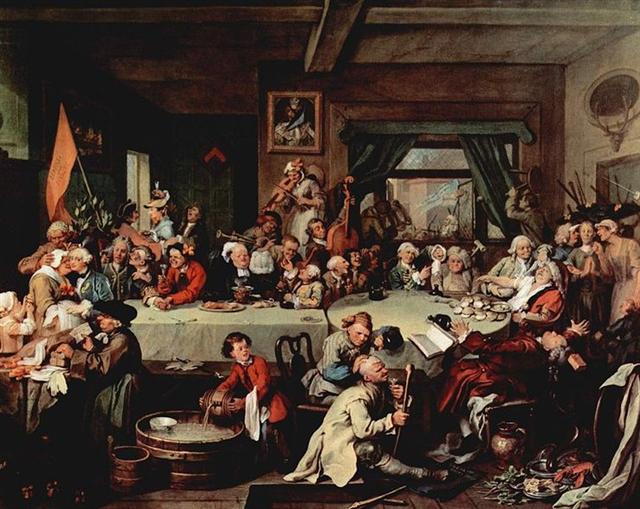 |

 |
 |
 |
|
Eb6-17 (326 + 201 = 527 = 628 -
101) |
Eb6-18 (202) |
Eb6-19 |
|
ka hakatu ma te rima |
hakapeka hia te tagata |
kiore - henua |
|
Peka.
Pekapeka, starfish. Vanaga. 1. 100,000 T. 2. A cross;
pekapeka, curly; pekapekavae, instep T. (? shoelaces.);
hakapeka, to cross; hakapekapeka, to interlace,
lattice. T Mgv.: peka, a cross, athwart, across; pepeka,
thick, only said of a number of shoots or sprouts in a close bunch.
Mq.: peka, a cross, dense thicket. Ta.: pea, a cross.
Churchill. Mq.: Pekahi, to make signs with the hand, to blow
the fire with a fan. Ha.: peahi, id. Churchill.
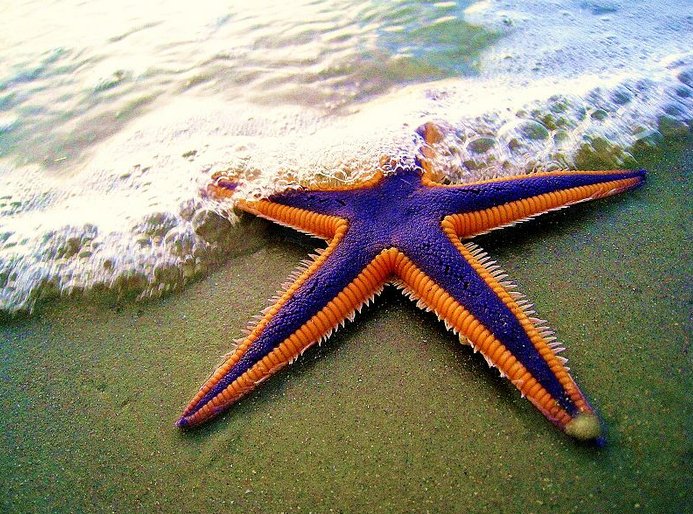 |
|
Oct 24 |
25 |
26 (299) |
|
ξ
Arietis (35.0), ρ Ceti (35.4), 12 Trianguli
(35.8), ξ² Ceti (35.9)
*360.0 = *35.4 - *41.4 |
σ
Ceti (36.9) |
ν
Ceti (37.9) |
| April 25 (115 =
64 + 41 + 10, 480, *400) |
26 |
27 |
|
In October 24 they would ideally have observed the
Full Moon at the right ascension line of
Ξ (ξ) Arietis (*35.0). This was where
the Sun was bound to rise in April 25 (115, *35). There were *360
days needed to cover the Sun year. Therefore *360 + *35 - *41 = *354
(→ 12 * 29½).
... In rongorongo times the last Greek lettered star
in Orion (ξ) rose with
the Sun in June 21. The letter seems to have originated from the
Phoenician letter samekh (tent peg, supporting prop), which
in turn may have been derived from the ancient Egyptian djed
column ...
 |
We have here reached to the end of the 24
kíore-henua glyphs:
| 1 |
 |
7 |
 |
13 |
 |
19 |
 |
| 2 |
 |
8 |
 |
14 |
 |
20 |
 |
| 3 |
 |
9 |
 |
15 |
 |
21 |
 |
| 4 |
 |
10 |
 |
16 |
 |
22 |
 |
| 5 |
 |
11 |
 |
17 |
 |
23 |
 |
| 6 |
 |
12 |
 |
18 |
 |
24 |
 |
In
the G text a rising maro string has
been drawn attatched in front of kiore-henua and 31 * 13 = 403 days seems to have been
distributed over 123 (179 - 56) glyphs. 403 - 123 = 280.
We can
compare with the E text, where 203 (Eb6-19) - 55 (Eb2-13) = 148.
242 (number
of glyphs on side
b of the G tablet) + 123 = 365 = 472 (total number of glyph spaces on
the G tablet) - 107.
628 - 148
(→ 107 + 41) = 480 = 365 + 115 (→
April 25).
|
a1 |
32 |
32 |
b1 |
42 |
368 |
|
a2 |
33 |
65 |
b2 |
27 |
395 |
|
a3 |
35 |
100 |
b3 |
16 |
411 |
|
22 |
433 |
|
a4 |
36 |
136 |
b4 |
42 |
475 |
|
a5 |
42 |
178 |
b5 |
35 |
326 + 184 = 510 |
|
a6 |
39 |
217 |
b6 |
36 |
118 |
546 |
|
a7 |
39 |
256 |
b7 |
42 |
588 |
|
a8 |
4 |
260 |
b8 |
40 |
314 * 2 = 628 |
|
9 * 29 |
|
30 |
290 |
|
a9 |
36 |
326 |
sum total |
260 * 2 + 108
260 + 368 = 314 * 2 |
| sum |
260 + 66 |
|
2 * 314 - 510 = 118 = 4 lunar
synodic months |
Taking a closer look we can then place in parallel:
 |
 |
 |
 |
| Ga7-11
(180 → 500 - 320) |
Ga7-12 |
Ga7-13 |
Ga7-14 (183 → 177 + 6) |
|
SEPT 17 (260) |
18 |
19 |
20 (*183) |
|
MARCH 19 (78) |
20 (*364) |
21 |
22 |
|
BEID (Egg) =
ο¹
Eridani
(62.2),
μ
Persei (62.8)
VINDEMIATRIX ( ε Virginis) |
Al Dabarān-2 (The
Follower)
HYADUM I =
γ
Tauri (63.4)
*22.0 = *63.4 -
*41.4 |
HYADUM II = δ¹ Tauri
(64.2) |
Net-19 (Crow)
AIN (Eye) =
ε
Tauri,
θ¹
Tauri,
θ²
Tauri (65.7) |
|
May 22 |
23 |
24 (144 = 80 + 64) |
25 |
| |
 |
 |
 |
 |
| Eb5-25
(326 + 174 = 500) |
Eb5-26 |
Eb5-27 |
Eb5-28 (177 = 354 / 2)
|
|
e tamaiti |
nuku maro etoru |
kua puoko i te haú ia |
te henua - te kiore |
|
Sept 27 (270) |
28 |
29 |
30 (3 * 91 = 273) |
|
March 29 (88) |
30 |
31 |
April 1 (91) |
|
ε Andromedae (8.2),
DELTA = δ
Andromedae (8.4),
SCHEDIR (Breast) = α Cassiopeiae
(8.6), ζ Andromedae, μ Phoenicis (8.9)
*8.4 -
*41.4 = *149.0 - 182.0 =
- *33.0 |
ξ
Phoenicis (9.0),
ρ
Tucanae (9.1),
DENEB KAITOS
(Tail of the Sea Beast) = β Ceti, η Phoenicis (9.4),
AL NITHĀM (String of Pearls) =
φ¹
Ceti
(9.6)
*9.4 -
*41.4 = *150.0 - 182.0 =
- *32.0 |
ACHIRD (Woman with Luminous Rays) =
η
Cassiopeiae
(10.7) |
Legs-15 (Wolf)
ν
Andromedae (11.0),
φ²
Ceti (11.1),
ρ Phoenicis (11.2),
η
Andromedae (11.4)*335.0
= *11.4 - *41.4
|
The
time distance seems to be 270 (September 27) - 260 (SEPTEMBER 17) =
10 days. From the Breast (*8) to the Egg (*62) we can count to *54. My
imagination flies ahead to 354 - 300 = 64 - 10 = 54
→ 'February 23:
... The leap day was introduced as part of the Julian reform. The day
following the Terminalia (February 23) was doubled, forming the 'bis
sextum - literally 'double sixth', since February 24 was 'the sixth
day before the Kalends of March' using Roman inclusive counting (March 1
was the 'first day'). Although exceptions exist, the first day of the
bis sextum (February 24) was usually regarded as the intercalated or
'bissextile' day since the third century. February 29 came to be
regarded as the leap day when the Roman system of numbering days was
replaced by sequential numbering in the late Middle Ages ...
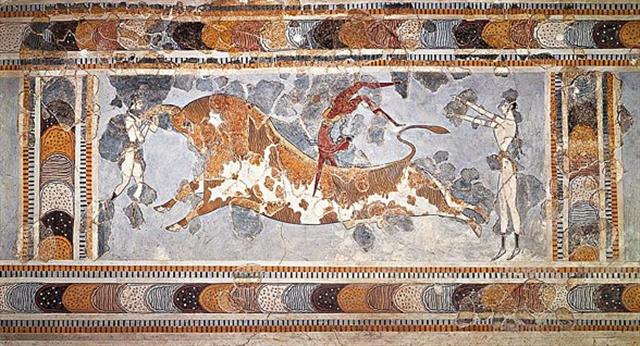
|





















